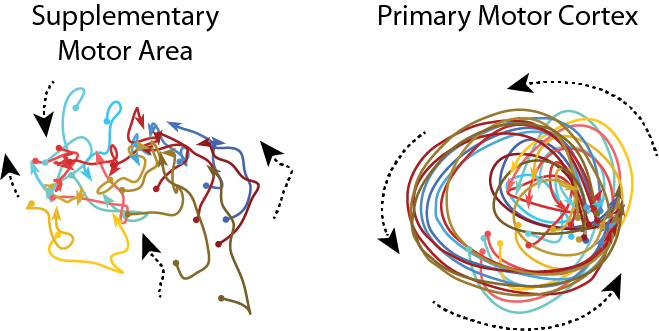Different cortical motor areas are generally assumed, based on lesion and recording results, to make different contributions to movement generation and control.
We are interested in whether and how the contributions of these different areas differs. For example, are these areas performing fundamentally similar computations but processing different information? Or are the computations themselves fundamentally different?
We address these questions by characterizing the dynamical properties of different cortical motor areas, and by comparing results to models performing different computations spanning different time-scales.

